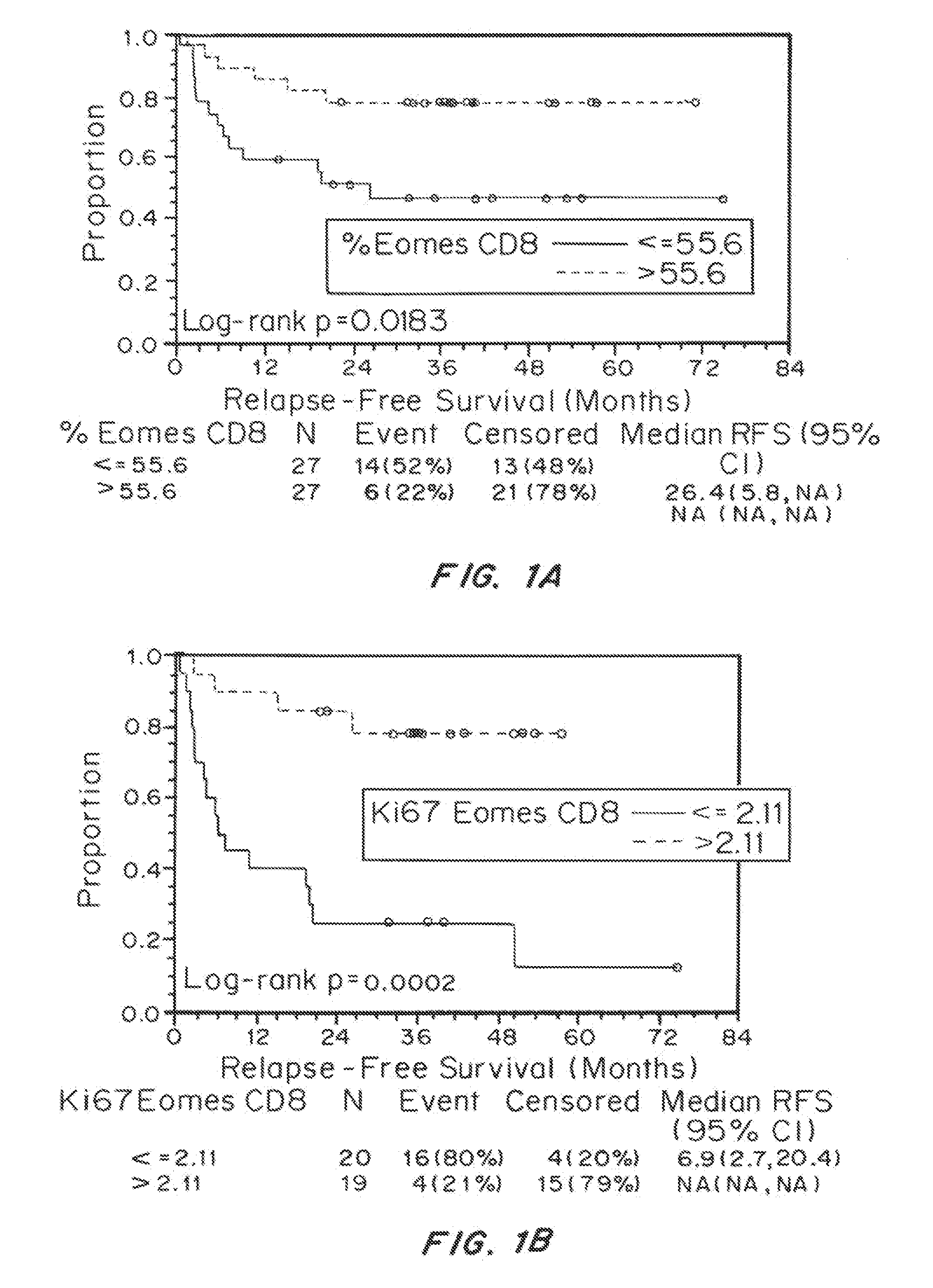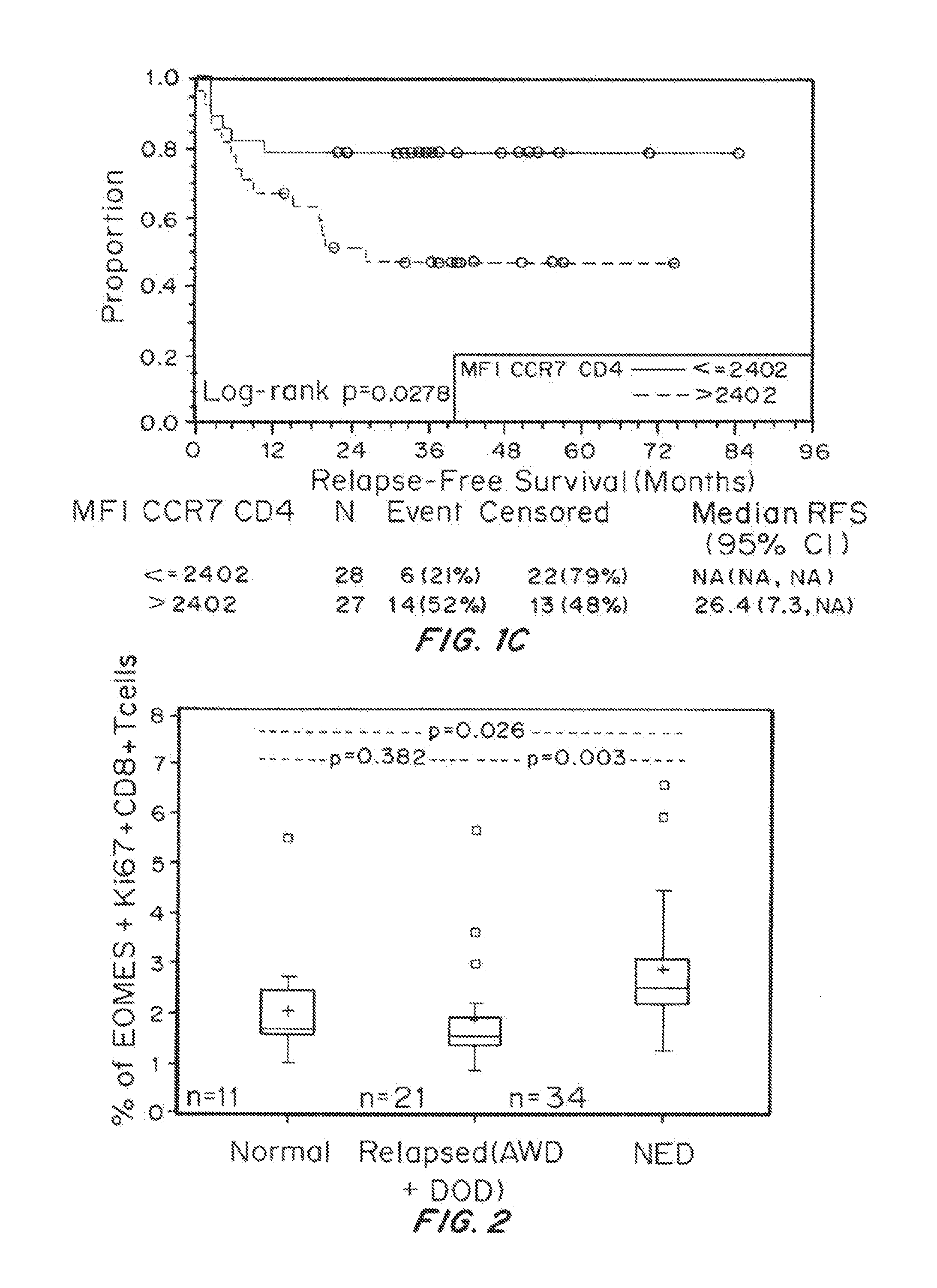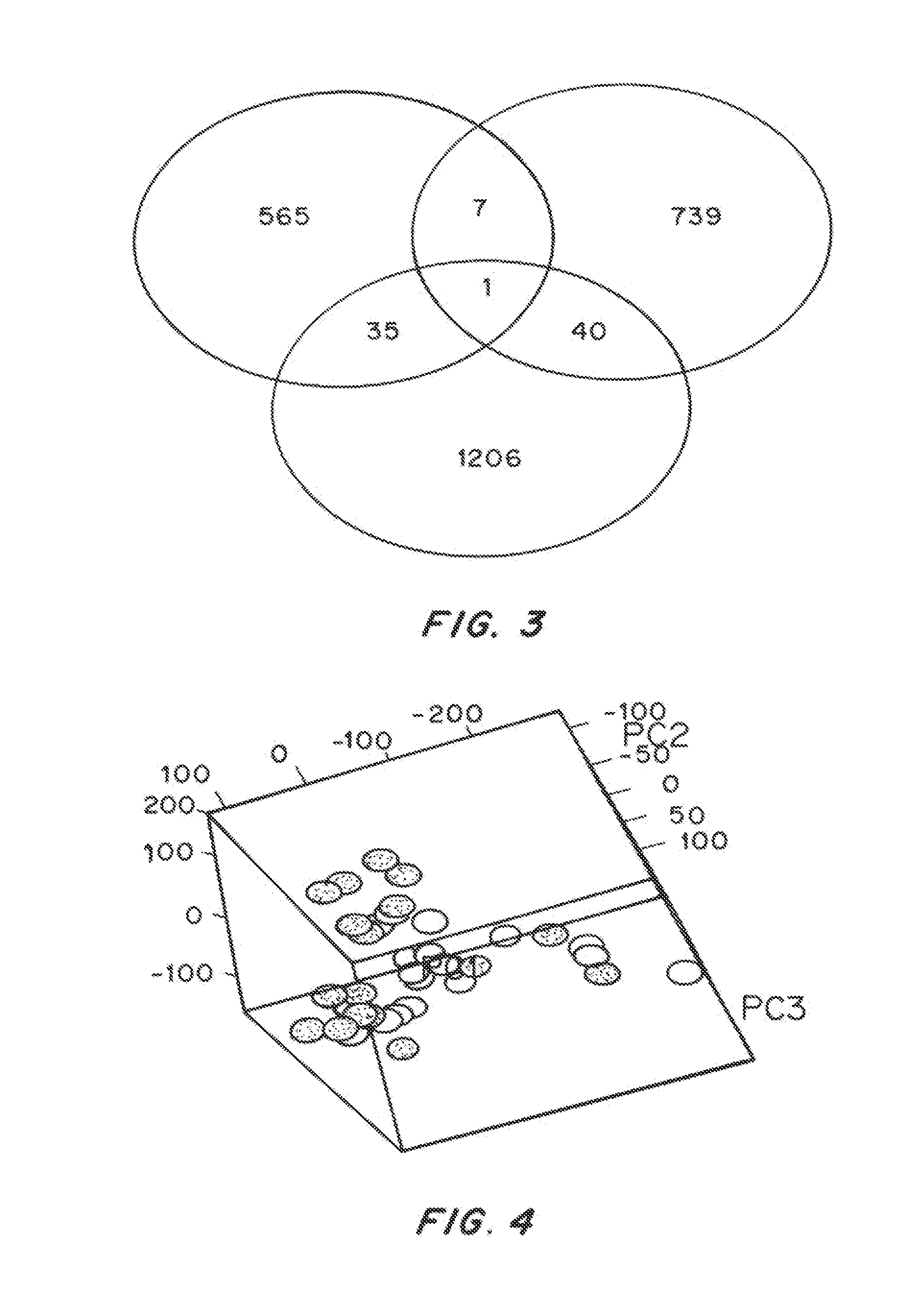Predictive Biomarkers for CTLA-4 Blockade Therapy and for PD-1 Blockade Therapy
a biomarker and ctla-4 blockade technology, applied in the field of prediction biomarkers, can solve the problem that the risk of relapse after ctla-4 blockade treatment is inversely associated with the cell in the pbmcs
- Summary
- Abstract
- Description
- Claims
- Application Information
AI Technical Summary
Benefits of technology
Problems solved by technology
Method used
Image
Examples
example 1
Biomarkers on Melanoma Patient T Cells Associated with Ipilimumab Therapy
[0142]Materials and Methods
[0143]Patients
[0144]Between June 2004 and December 2008, 75 patients (39 at the University of Southern California, Norris Cancer Center and 36 at the Moffitt Cancer Center) with resected stage IIIC / IV melanoma received ipilimumab with or without a peptide vaccine. The demographic and clinic outcomes of the patients for this study were shown in Table 1, which have been reported previously (Sarnaik A A, et al. Clin Cancer Res. 17(4):896-906 (2010)) with updated follow-up: three patients died (R DOD); one patient relapsed and was resected with no evidence of disease (R NED) instead of no evidence of disease (NED). Toxicity was assessed by National Cancer Institute Common Terminology Criteria for Adverse Events, version 3.0. The protocol was approved by the University of Southern California / Los Angeles County and University of South Florida Institutional Review Boards, and all patients pr...
example 2
Gene Profiling of Melanoma Patients CD8+ T Cells Associated with PD-1 Blockade Treatment and Clinical Outcome
[0177]PD-1 blocking antibody (BMS-936558) therapy has shown antitumor activity and clinical benefit in melanoma patients. The precise molecular basis and mechanisms of PD-1 blockade in vivo have not been documented and there are few biomarker associated with clinical benefit. The purpose of this study is to understand the mechanisms and investigate potential baseline and surrogate biomarkers associated with clinical benefit of PD-1 blockade in stage IV unresectable melanoma patients' T cells in vivo.
[0178]Materials and Methods
[0179]Microarray analysis was performed on flow sorted CD8+ T cells from PBMCs collected pre- and 12 week-post PD-1 blockade treatment at 1, 3 and 10 mg / kg. The pre-treatment sample was collected within 1 week before anti PD-1 treatment. The post-treatment sample was collected 12 weeks after the initial treatment with 6 injections of anti PD-1 antibody. ...
PUM
| Property | Measurement | Unit |
|---|---|---|
| Fraction | aaaaa | aaaaa |
| Fraction | aaaaa | aaaaa |
| Fraction | aaaaa | aaaaa |
Abstract
Description
Claims
Application Information
 Login to View More
Login to View More - R&D
- Intellectual Property
- Life Sciences
- Materials
- Tech Scout
- Unparalleled Data Quality
- Higher Quality Content
- 60% Fewer Hallucinations
Browse by: Latest US Patents, China's latest patents, Technical Efficacy Thesaurus, Application Domain, Technology Topic, Popular Technical Reports.
© 2025 PatSnap. All rights reserved.Legal|Privacy policy|Modern Slavery Act Transparency Statement|Sitemap|About US| Contact US: help@patsnap.com



